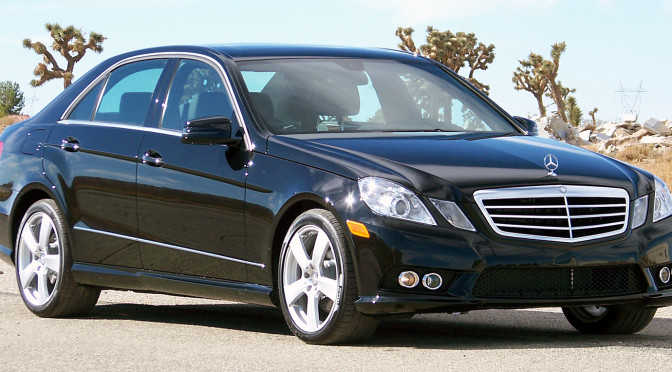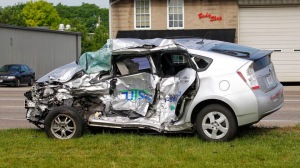 Among front, side, and rear-impact collisions, side impacts are the most likely to be fatal. These are the t-bones, the broadside crashes that occur at intersections and more rarely when vehicles skid sideways into the paths of oncoming vehicles. They’re much more likely to be fatal for the basic reason that there’s a lot less material between you and the 3,200 lbs (the average passenger vehicle weight today in the US) of metal and plastic careening toward you at 30, 40, or 50 miles per hour.
Among front, side, and rear-impact collisions, side impacts are the most likely to be fatal. These are the t-bones, the broadside crashes that occur at intersections and more rarely when vehicles skid sideways into the paths of oncoming vehicles. They’re much more likely to be fatal for the basic reason that there’s a lot less material between you and the 3,200 lbs (the average passenger vehicle weight today in the US) of metal and plastic careening toward you at 30, 40, or 50 miles per hour.
Given that a big part of this blog has to do with analyzing crashes themselves and seeing what we can learn from them, I write about these crashes every so often, and they are very, very difficult to survive. Here’s a fatal example involving a Prius, and here’s another involving an Optima. Here’s one involving a Sequoia, and here’s one involving a Fusion. All of the crash analyses I linked to involve vehicles with side airbags covering both the head and torso regions, and 3 of the 4 analyses involved vehicles that received “good” side crash test scores by the IIHS.
It’s one thing to test well, but it’s another thing to survive these crashes when the forces involved go far, far beyond the amounts tested in labs. This is a problem, and it’s one that can be tackled in a number of ways.
Solving the side impact problem: weight and speed
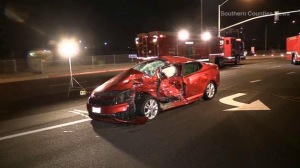 Personally, I’d be in favor of much stricter weight limits in passenger vehicles in the US, as well as on much stricter enforcement of speed limits and general lowering of speed limits throughout the US. The heavier a vehicle, the more likely it is to cause damage in a collision. The effects are even more pronounced with speeding, since kinetic energy increases with the square of velocity (KE = .5 * mass * velocity * velocity), rather than proportionally with mass. What that means is that a little bit of speeding can make a crash a lot more severe than a little bit of extra weight, given a particular speed and weight.
Personally, I’d be in favor of much stricter weight limits in passenger vehicles in the US, as well as on much stricter enforcement of speed limits and general lowering of speed limits throughout the US. The heavier a vehicle, the more likely it is to cause damage in a collision. The effects are even more pronounced with speeding, since kinetic energy increases with the square of velocity (KE = .5 * mass * velocity * velocity), rather than proportionally with mass. What that means is that a little bit of speeding can make a crash a lot more severe than a little bit of extra weight, given a particular speed and weight.
How to not die in a side impact collision
However, given the unlikelihood of convincing our lawmakers to put limits on the auto industry regarding vehicle weights or to put limits on our citizens by increasing the prevalence of speed cameras and the enforcement of speed limits, in today’s political climate in the US, unfortunately, the best ways to protect yourself and your loved ones from dying in t-bone collisions today are to either:
1.) Avoid driving (e.g., by using public transportation or by cycling or walking).
2.) Limit driving (by the same measures above and by combining trips).
3.) Drive the most side-impact-resistant vehicles possible.
The first two points are worth many posts in themselves, but today’s post will be on the third point, and specifically related to choosing the safest cars for side impacts currently available in the US in 2015. I’ll write a similar post for minivans and another for SUVs in the near future.
Determining which cars are the safest for side impact collisions by structural integrity (crush distance)
The methodology behind this list is simple. The IIHS has the best widespread side impact test protocol in the United States, in my opinion, so let’s see what we can learn from it.
Essentially, a 3,300 lb deformable barrier with the height and shape of an SUV is rammed into the driver’s side of a tested vehicle at 31 mph. A pair of dummies, each representing either a 5th percentile woman or 12-year-old child are strapped into the driver’s seat and the driver’s side rear seat. Data is recorded and analyzed along a range of parameters, including forces against the head, chest, shoulders, hips, and legs in the dummies, as well as the amount of deformation within the vehicle itself. This is where I’m most interested. This is the “structure and safety cage” subscore in the side impact test.
Every vehicle deforms to some degree when rammed with such energy (approximately 143.7 KJ, or what you get when you multiply .5 * 1496.8kg * 13.8 m/s ^ 2); the less the B-frame crushes into the driver’s seat area, the more time and space the restraint systems like the seat belt and airbags have to protect you in a crash. The B-pillar deformation structural rating is based on the maximum amount of crush of the B-pillar to the center of the driver’s seat, measured in centimeters.
The IIHS has various thresholds for what constitute a “poor” maximum level of intrusion (0 cm or worse between the B-pillar and the center of the driver’s seat), a “marginal” level (0-5 cm), an “acceptable” level (5-12.5 cm), and a “good” level (> 12.5 cm). The full details, including those of how the test is conducted and of what the guidelines are for rating injury measures, are here. From there, you can read that the threshold for a “good” structural score is at least 12.5 cm of space between the center of the driver’s seat and the crushed-in B-panel.
To me, that’s where we’re just getting started.
The greater that crush space, given a vehicle’s overall “good” score for the side impact test and presence of airbags, the safer the vehicle. Even though a vehicle might score “good” overall on the side impact test, would you rather sit in one with a 3 cm crush space or one with a 30 cm crush space?
That’s what this list is based on. Every cm between you and a life-ending amount of energy is a life-preserving cm of survival space. Let’s see who’s doing the best job at it right now. For brevity’s sake, I’ll list the top 10 cars I could find. All data is accurate as of July 2015, and all images are courtesy of Wikipedia.
The 11 safest cars for side impact collisions in 2015
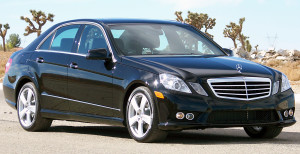 24 cm – 2010-2015 Mercedes-Benz E-Class sedan (e.g., E 350).
24 cm – 2010-2015 Mercedes-Benz E-Class sedan (e.g., E 350).
This is the safest mainstream car in the United States today when it comes to side impact crash survival, based on its country-leading 24 cm of crush protection. No other car does a better job, and as of this writing, only one other vehicle does any better, out of all minivans and SUVs currently on the market: the BMW X5. After the X5, it’s only equaled by one other vehicle in the United States: another Mercedes, the GLK. It’s worth noting as well that in the ’05-’08 model years, the E-Class Sedan was estimated to have a zero driver death rate by the IIHS, as a nod to the overall strong track record of this vehicle and its drivers. That previous generation of the E-Class sedan led to this generation.
You can read my full 3 across guide to the E-Class here.
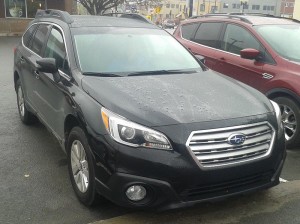 22 cm – 2015 Subaru Outback.
22 cm – 2015 Subaru Outback.
Hot on the heels of the E-Class sedan comes the latest Outback from Subaru. Subaru continues to impress throughout their line, and their marketing themselves as a younger, fresher, and outdoorsier version of Volvo is paying off, as well as their obvious attention to safety in models like the Outback. It’s worth noting that the ’10-’11 Outback had a DDR of 6, as I wrote about here. That Outback is the generation prior to this Outback.
You can read my full 3 across guide to the Outback here.
 22 cm – 2015, 2016 Volkswagen Golf / GTI.
22 cm – 2015, 2016 Volkswagen Golf / GTI.
The Golf scores marvelously here, tied with the Outback as the 2nd-most impact resistant car on the list. What makes it even more impressive is the fact that it’s neither a large nor a mid-sized car, but a small one. The Golf is available in several flavors, but all feature good safety scores, including the side impact frontal crash test score, and all feature a class-leading 22 cm of side impact intrusion protection.
You can read my full 3 across car seat guide to the Golf / GTI here.
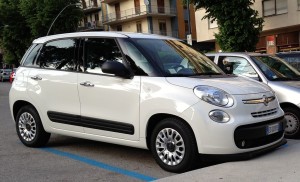 21 cm – 2014, 2015 Fiat 500L.
21 cm – 2014, 2015 Fiat 500L.
The Fiat 500L is a surprise entry here as the 4th-most structurally sound car I could find, but it was certainly a welcome find, especially considering the fact that the 2015 500L was branded with a poor small overlap score. Fiat will have to step up their game in that area.
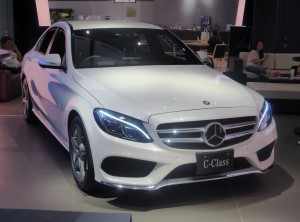 20.5 cm – 2015 Mercedes-Benz C-Class sedan (e.g., C 400).
20.5 cm – 2015 Mercedes-Benz C-Class sedan (e.g., C 400).
Mercedes makes another of several entries in the safest side impact car rankings with the C-Class sedan, which is essentially a smaller version of their E-class sedan. The 2009-2015 models of the C-Class sedan all feature 20.5 cm of intrusion resistance at the B-pillar in the IIHS test, an incredibly impressive streak. The ’08-’11 C-Class sedan also featured driver death rates of 7 and 10 in the 4WD and 2WD models respectively, which I wrote about here.
You can read my full C-Class 3 across guide here.
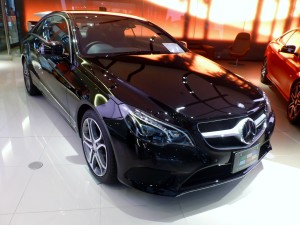 19.5 cm – 2010-2015 Mercedes-Benz E-Class coupe.
19.5 cm – 2010-2015 Mercedes-Benz E-Class coupe.
The E-Class coupe is closely related to the E-Class sedan above, although it does not test quite as well in resisting side impact intrusion. Another strike it has against it is that coupe models of a vehicle almost always have higher driver death rates than the sedans, simply because they’re driven more recklessly.
You can read my full 3 across guide to the E-Class here.
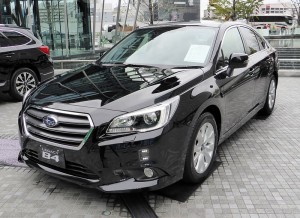 19.5 cm – 2015 Subaru Legacy.
19.5 cm – 2015 Subaru Legacy.
The Subaru Legacy is closely related to the Outback above, which is essentially a wagonized conversion of the Legacy. Both vehicles share the same small overlap score and front moderate overlap score, despite differing in side impact tests. The previous generation of the Legacy (’10-’11) also joined the E-Class sedan, the A6, and the A4 as the only cars to ever make the zero list for driver deaths per the IIHS. That’s as safe as it gets.
You can read my full 3 across guide to the Legacy here.
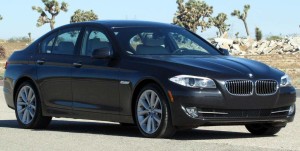 19 cm – 2011-2015 BMW 5 Series (e.g., 528i).
19 cm – 2011-2015 BMW 5 Series (e.g., 528i).
The BMW 5 Series is an unsurprising entry here, given BMW’s longstanding commitment to driver safety alongside Mercedes. The ’11 to’15 5 series suffers from a marginal small overlap score, but BMW can be expected to increase the performance of the next iteration of the 5 series in the future.
You can read my full 3 across guide to the 5 Series here.
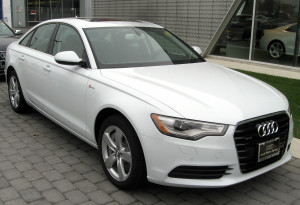 19 cm – 2012-2016 Audi A6.
19 cm – 2012-2016 Audi A6.
Tied with the BMW 5 Series is the current generation Audi A6, another unsurprising entry given Audi and Volkswagen’s commitment to driver safety (though not driver emissions) over the last several years. The ’05-’08 iteration of the Audi A6, along with the equivalent generation of the Mercedes E-Class sedan, was the first car to be estimated by the IIHS to have had a driver death rate of zero. That generation of the A6 immediately preceded this generation of the A6.
You can read my full 3 across car seat guide to the A6 here.
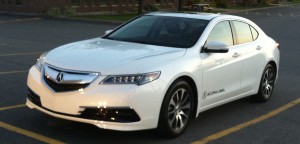 19 cm – 2015 Acura TLX.
19 cm – 2015 Acura TLX.
Honda / Acura makes their debut on the safest side impact car list with the all-new TLX, which is an update to the TL and TSX cars of previous years. If it’s anything like its ancestors, it will have strong bones, as the TL and TSX had two of the lowest estimated driver death rates in the most-recent IIHS study, at 5 and 7 respectively. I’m expecting great things from the TLX.
You can read my full TLX, TL, and TSX 3 across guides here.
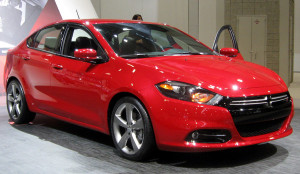 19 cm – 2013-2015 Dodge Dart.
19 cm – 2013-2015 Dodge Dart.
Rounding out the list is the current generation Dodge Dart, which joins the Fiat as the only other small car on the list and the second vehicle on the list from Fiat Chrysler. The Dodge Dart is also easily the most affordable vehicle on the list, and with its bevy of good safety scores all around, I look forward to seeing how it performs in the next driver death rate study.
You can read my full 3 across guide to the Dart here.
More broadly, the presence of multiple Mercedes-Benz, Subarus, Volkswagens, and Fiat Chryslers in the top list of intrusion-resistant cars is clear evidence of the commitment to safety present in these companies, and will surely bring good feelings to anyone buying a recent model-year vehicle from any of those brands.
How to choose a car to keep you safe in side impact crashes
In conclusion, what does this all mean? Should you sell your current car and buy one of the above immediately? Is every other car on the road a rolling deathtrap waiting to be impaled, with you sitting in the driver’s seat like a human shish kabob? Well, not exactly. There are a number of other great vehicles that I didn’t include on the list to save time that were literally only a centimeter or two away from appearing on the list. The 2015 Chrysler 200 sedan, for example, had a quite impressive intrusion score of 17.5 cm. Similarly, the 2015 Fiat 500 and 2014-2015 Maserati Ghibli clock in at 17.5 cm, although you’ll pay a lot more to get the last model. There are also a number of recognized automakers like Toyota, Honda, and Volvo whose vehicles didn’t make the cutoff simply because I was only interested in the top vehicles for this post.
The takeaway message is that it’s worth looking beyond the overall “good” score and diving into the structural integrity subscore when searching for safe cars for this particular kind of crash. Of course, you’ll start with looking for airbags and the overall “good” score, but beyond that, if you’re choosing between two vehicles that seem good on paper, dive into this subscore and you might be surprised at what you find. And remember that just because a car isn’t anywhere near the top numbers on this list doesn’t mean it’s not safe. The older E-Class sedan I mentioned with the zero driver death rate didn’t even have a “good” overall score! It was “acceptable!” Furthermore, the “structure and safety cage” score was also “acceptable,” as it was 7.5 to 9 cm, depending on which year it was manufactured. And yet, because of its drivers, the overall safety of the vehicle, and a good amount of luck, no drivers in it died for several years.
We can’t control everything. The safest option is still not driving at all, followed by driving as little as possible. But if you’ve got to drive, drive safely, and do your best to choose a safe vehicle. To that end, my safe family vehicle analyses for cars and SUVs are worth reading.
I hope you enjoyed reading this as much as I enjoyed writing it. It’s exciting to see where we’re headed in car safety these days. I’ll have a followup article soon comparing minivan safety and other comparing SUV safety along the same metrics. Stay tuned, remember to avoid common mistakes parents make with car seats, and check out some 3 across car seat guides while you’re here.
If you find the information on car safety, recommended car seats, and car seat reviews on this car seat blog helpful, you can shop through this Amazon link for any purchases, car seat-related or not. Canadians can shop through this link for Canadian purchases.

